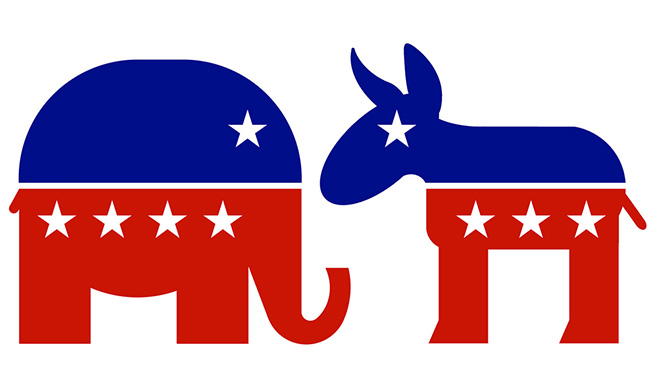Great Depression. Pearl Harbor. 9/11. Sandy Hook. June 14’s Alexandria, Virginia, shooting of Republican congressmen. The list of tragic events Americans have witnessed is endless.
It’s during troubling times our politicians and citizens came together, set aside their party affiliation, and resolve conflict. But; usually, the solidarity moments are soon forgotten, and polarization picks up where it left off.
While political scientists may disagree on whether political polarization started after the Civil War’s Reconstruction era, mid-1970s, or early 1990s, all agree divisiveness is now at its zenith. With few exceptions, party-line roll-call voting has become standard protocol.
Around 93 percent of the voting choices during America’s 114th congressional session (2015-16) were along party lines — Democrats voted one way, and Republicans voted the opposite. Never the twain shall meet seems to be apropos in today’s political world. The result of polarization is that nothing worthwhile gets accomplished, and status quo becomes institutionalized.
The bulk of roll-call voting in Congress comes down to two issues: the role of government intrusion in the economy and regional differences, whether it’s rural versus urban, upper versus lower class or white-collar versus blue-collar.
The largest political survey of 10,000 adults conducted by the Pew Research Center during January-March revealed Democrats and Republicans are further apart ideologically than at ANY point in history.
What has brought us to such divisiveness?
Four pieces of evidence hit me square in the face. First, the typical Republican is more conservative than 94 percent of Democrats, and the median Democrat is more liberal than 92 percent of Republicans, a 20 percent increase from 20 years ago.
Second, partisan antipathy has risen. Forty-three percent of Republicans, versus 17 percent 20 years ago, have very unfavorable opinions of the Democratic Party. Likewise, the share of Democrats with very negative opinions of the Republican Party has more than doubled in the past 20 years from 15 percent to 38 percent.
Third, the percentage of independents who embrace both liberal and conservative views has shrunk from 49 percent two decades ago to now 39 percent.
Finally, the most telling about why we are in the era of polarization is 62 percent of Dems and 57 percent of Republicans define compromise as “their side gets more of what it wants.”
Only 80 U.S. congressional delegates, about half Republican and half Democrat, have formally endorsed the nonprofit organization No Labels, which wants to replace the politics of partisan point-scoring with the politics of productive problem-solving. They have co-sponsored nearly 20 different pieces of bipartisan legislation.
Stop and think about this. Only 15 percent (80 of 535) of our congressional representatives have formally agreed to the bipartisanship value. No wonder Washington is a mess.
Sens. Chuck Grassley and Joni Ernst, R-Iowa, and Iowa Reps. Rod Blum (Republican), David Loebsack (Democrat), and David Young (Republican) are No Labels bipartisan supporters. Not surprisingly, Rep. Steve King, R-Iowa, wants nothing to do with bipartisanship behavior.
What should we do about this polarization albatross? First, let’s conduct an honest soul-searching assessment of our attitude toward both party’s platform positions and polarization record, seek out multiple and diverse sources of information to become better informed, be open to non-combative dialogue with others who view life differently, and become politically active.
Second, we need to do a better job of vetting our Democrat and Republican candidates to determine if their values are too far left- or right-wing damaging or are they more moderate to bring our country back together in a more peaceful, centrist, constructive, and productive manner.
America’s 325 million citizens deserve bipartisanship behavior, and only we, yes, that includes you and me, can put an end to stifling polarization. I’m up to the challenge of political soul searching and retrofitting my beliefs. How about you?
— Steve Corbin UNI professor emeritus of marketing



